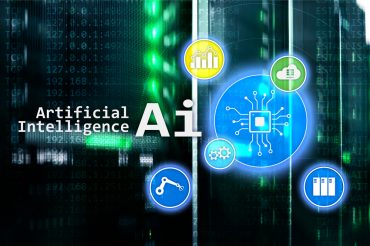
AIOps infuses artificial intelligence (AI) into IT Ops to help teams streamline the way that they maintain the reliability of their systems.
With huge volumes of data flowing into IT operations systems, businesses are struggling to detect, diagnose, and resolve critical issues, rendering them unable to meet their overall goals. In response to market disruption and heightened customer expectations, medium to large-sized organizations are aggressively trying to redefine IT functions, business processes, and customer engagement strategies to be digital-first—a transformation that is proving to be challenging. Many believe AIOps can play an important role.
What’s needed is a new approach, one that moves beyond the traditional siloed approach. Enterprise Management Associates confirms that in terms of enabling both IT and digital business transformation, research upholds the fact that few things are more essential than the “analytics/automation handshake.”
See also: AIOps Gaining Traction as Technology Accelerator
The analytics-automation handshake
AIOps is gaining traction in the market, but there’s still a lot of confusion about what it actually means. In fact, according to EMA’s new AIOps Radar report, “Rather than [being] a market in the strictest sense, AIOps might be more accurately described as a ‘landscape’ containing within it some rather startling surprises.”
Within this landscape, integration is key – and this is where analytics and automation come together. In the context of AIOps, the analytics/automation handshake simply describes the marriage between the two components. Analytics covers insight, while automation uses the insight to take action. The two work as a complementary pair as analytics informs automation, and automation undertakes the desired processes.
AIOps infuses AI into IT Ops to help teams streamline the way that they maintain the reliability of their systems. This has come about as a response to alert fatigue from all those false positives streaming in and to the difficulty meeting service level agreements (SLAs.)
IT Ops continues to struggle with many manual tasks that are low-level and could easily be automated. AI assists with faster and more accurate analysis of more data than humans could do, as analysis of data streaming from IT monitoring tools gets automated. AI helps put all that data coming in from disparate sources in context to analyze it properly.
The importance of AIOps
Way back in 2017, Gartner predicted that over 40% of data science tasks would be automated by this year, providing insights that might be otherwise unavailable to an enterprise.
There are three primary reasons for this:
1. Automation increases the speed of analytics. By combining machine learning and analytics, data coming from IT monitoring tools is automatically analyzed. This faster data correlation enables the IT security team to quickly find the true, urgent security events. And because they don’t have to spend time trying to correlate the data themselves, analysts can perform other needed activities like root-cause fixes and preventative maintenance.
2. Automating data analysis is cost-efficient and saves employees time. The massive quantity of IT monitoring data makes it essentially unworkable to find the true threats in a network and derive useful information about them. All the different data formats and types, along with all the false alarms, create a humanly impossible task. But with automated analysis, data scientists can focus on important tasks and leave behind tedious, time-consuming ones.
3. Automation yields greater accuracy, speed, and efficiency. By combining the powers of analytics and automation, organizations gain the ability to observe, engage and act across a range of domains. Non-IT roles, such as business executives, supply chain management, and customer experience, stand to benefit from new efficiencies. This is, in part, through integrations with critical business sources and enabling KPIs spanning revenue, business activity metrics, business process impacts, service-level agreements, cost of service delivery, and supply chain-related outcomes.
Preparing for change
McKinsey & Company recommend that leaders take advantage of the transformation and performance opportunities afforded by data, analytics, and digitization, as well as the rapidly evolving opportunities in AI, robotics, and automation. To do that, leaders need not just new technology but change management for their organizations, as these new approaches will require new ways of thinking and doing.
To make this transition successful, start small. Implement automation and analytics on a small scale, learn from the exercise, and adjust as needed as you add larger implementations. Experiment, learn, and then scale what works. But this is only part of the transition. You will also need to change some business models and processes. Automation, AI, and analytics will change some processes and require a rethinking of others. At the same time, business leaders will have to rethink business models – what no longer works and what is now possible based on what the analytics reveal.
Finally, leaders must not forget their human resources. There will be skills gaps to fill as technology takes a new place beside employees. Organizations have the opportunity to step up their learning and development, both to retain employees and to maximize their technology investment.
Winning the future
IT Ops should be a business enabler rather than a bottleneck, but the massive amount of data flooding into IT systems makes that a difficult if not impossible task. That’s why automation and AI are essential to success for today’s organizations. The result is AIOps, which increases the speed of analytics, saves time and money, and yields insights that help organizations grow. Leaders will need to manage the change well, not forgetting to upskill their human assets as part of the process. When analytics and automation shake hands, business wins.





























